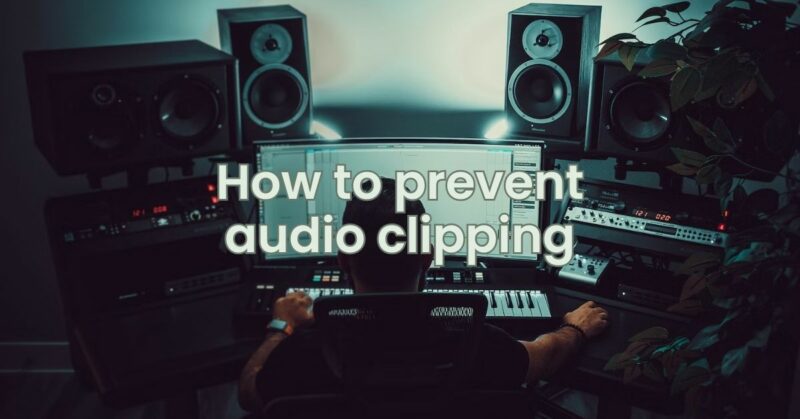Audio clipping is a common issue that can significantly impact the quality of sound reproduction, causing harsh, distorted tones and potential damage to audio equipment. Fortunately, with some knowledge and careful adjustments, you can prevent audio clipping and enjoy distortion-free sound. In this article, we’ll explore essential tips to help you avoid audio clipping and enhance your audio experience.
1. Set Proper Input Levels: One of the primary causes of audio clipping is an overdriven input signal. To prevent this, set proper input levels for your audio sources, such as microphones, instruments, or audio players. Aim to keep the input signal within a suitable range, ensuring it doesn’t become too loud for your audio system to handle.
2. Adjust Gain Settings Carefully: The gain control on your amplifier or mixer determines how much the incoming signal is amplified. Adjust the gain settings carefully to match the input signal level without causing distortion. Setting the gain too high can push the audio signal into clipping territory, so find the optimal balance to achieve distortion-free sound.
3. Utilize Limiters and Compressors: Limiters and compressors are audio processors that can help prevent audio clipping by controlling the dynamic range of the audio signal. Limiters set a maximum threshold for the output signal, preventing it from exceeding a certain level and causing clipping. Compressors reduce the dynamic range by making loud parts softer and softer parts louder, effectively evening out the overall signal. Properly set limiters and compressors can be valuable tools in preventing clipping.
4. Match Speaker Impedance: Ensure that the impedance of your speakers matches the amplifier’s output impedance or the recommended impedance range. Mismatched impedance can cause the amplifier to deliver more power than the speakers can handle, leading to clipping and potential damage. Verify the impedance ratings of your amplifier and speakers to ensure compatibility.
5. Upgrade Amplifier or Speakers: If your current amplifier consistently clips, even after adjusting settings and using limiters, consider upgrading to a more powerful amplifier or speakers with higher power handling capabilities. Upgrading to better-quality equipment with increased headroom can handle high-level signals more efficiently, reducing the likelihood of clipping.
6. Monitor Volume Levels: During performances, recording sessions, or listening sessions, monitor the volume levels carefully. Sudden surges or peaks in volume can cause clipping. Maintain a controlled and reasonable volume to prevent audio distortion.
7. Regular Equipment Maintenance: Regularly inspect and maintain your audio equipment, including cables, connectors, and speaker components. Damaged or faulty cables and connectors can disrupt the audio signal and contribute to clipping. Keeping your equipment clean and well-maintained ensures optimal performance and reduces the risk of clipping.
8. Use High-Quality Audio Converters: If you’re working with digital audio, using high-quality audio converters can help prevent clipping. Low-quality converters may introduce distortion more readily when handling high-level audio signals. Invest in reputable audio interfaces with high-quality converters for better sound reproduction.
Conclusion: Preventing audio clipping is crucial for achieving distortion-free sound and maintaining the health of your audio equipment. By setting proper input levels, adjusting gain settings carefully, using limiters and compressors, matching speaker impedance, considering upgrades, monitoring volume levels, performing regular maintenance, and using high-quality audio converters, you can enjoy a pristine audio experience. Taking these preventive measures will enhance your listening pleasure and ensure your audio system operates at its best for years to come.


